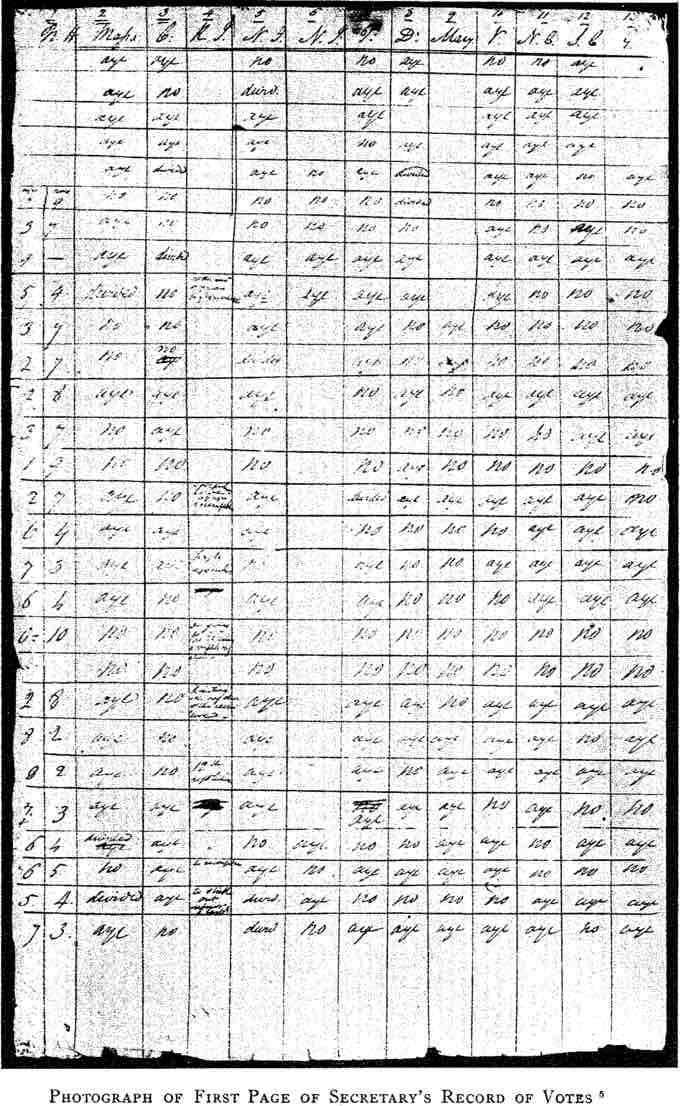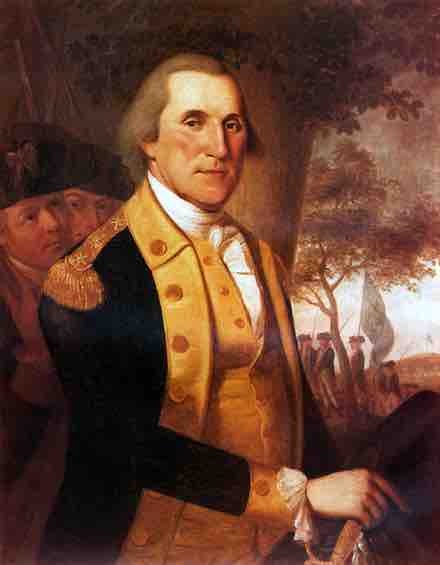Introduction
The Constitutional Convention took place in 1787, from May to September, in Philadelphia, Pennsylvania. It was convened to address problems in governing the United States of America following independence from Great Britain. Before the Constitution was drafted, the nearly four million inhabitants of the thirteen newly-independent states were governed under the Articles of Confederation, created by the Second Continental Congress. However, the chronically underfunded Confederation government, as originally organized, was inadequate for managing the various conflicts that arose among the states. Due to the difficulty of travel in the late 18th century, very few of the selected delegates were present on the designated day of May 14, 1787. It was not until May 25 that a quorum of seven states was secured.
The Early Debate
During the debates, each state was allowed to cast a single vote in accordance with the majority opinion of the state's delegates. The first area of major dispute was the manner by which the lower house would be apportioned. A minority wanted all states would have equal weight. Most accepted the desire among the slave states to count slaves as part of the population, although their servile status was raised as a major objection against this. The Three-Fifths Compromise designated that three-fifths of the slave population would be counted as part of a state's population.
The First Draft
The Convention adjourned from July 26 to August 6 to await the report of the Committee of Detail. The Committee of Detail drafted agreements made by the Convention up to that point, including the Virginia Plan's fifteen resolutions. It was chaired by John Rutledge . Other members included Edmund Randolph, Oliver Ellsworth, James Wilson, and Nathaniel Gorham. This report constituted the first draft of the United States Constitution. Much of what was contained in the final document was present in this draft.

John Rutledge
The Constitutional Convention adjourned to await the report of the Committee of Detail, which was to produce a first draft of the Constitution. It was chaired by John Rutledge (nicknamed "Dictator John" as a reflection of the extraordinary power he had assumed as South Carolina's governor during the early days of the Revolution).
Many details recorded by the Committee had never been discussed during the Convention, but the Committee viewed these details as uncontroversial and unlikely to be challenged. Much of the Committee's proposal would ultimately be incorporated into the final version of the Constitution without debate. Examples of these details include the Speech and Debate Clause, which grants members of Congress immunity for comments made in their jobs and the rules for organizing the House of Representatives and the Senate.
Further Modifications
Another month of discussion and minor refinement followed. During this month, few attempts to alter the Rutledge draft were successful. Some delegates wanted to add property qualifications for people to hold office. Others wanted to prevent the national government from issuing paper money. James Madison wanted to push the Constitution back in the direction of his Virginia plan.
Drafting and Signing
Once the final modifications had been made, the Committee of Style and Arrangement was appointed "to revise the style of and arrange the articles which had been agreed to by the house." Unlike other committees this final committee included no representatives from smaller states. Its members were mostly in favor of a strong national government and unsympathetic to calls for states' rights.
For three days, the Convention compared this final version with the proceedings of the Convention. The Constitution was ordered engrossed on Saturday, September 15 by Jacob Shallus, and it was submitted for signing on September 17. George Washington signed the document first. Moving by state delegation from north to south, as had been the custom throughout the Convention, the delegates filed to the front of the room to sign their names . As the final delegates were signing the document, Benjamin Franklin commented on the painting of a sun behind Washington's chair at the front of the room. He said he often looked at the painting, "without being able to tell, whether it was rising or setting. But now at length, I have the happiness to know it is a rising, and not a setting sun. " The Constitution was then submitted to the states for ratification, as stipulated by Article VII.

Delegates Voting
Reproduction of secretary's handwritten records of votes conducted at the U.S. Constitutional Convention of 1787, as published in Farrand's Records, Volume 1 (1911).

George Washington
George Washington; Oil on canvas, 361/2" x 273/4" (circa 1787-1790).